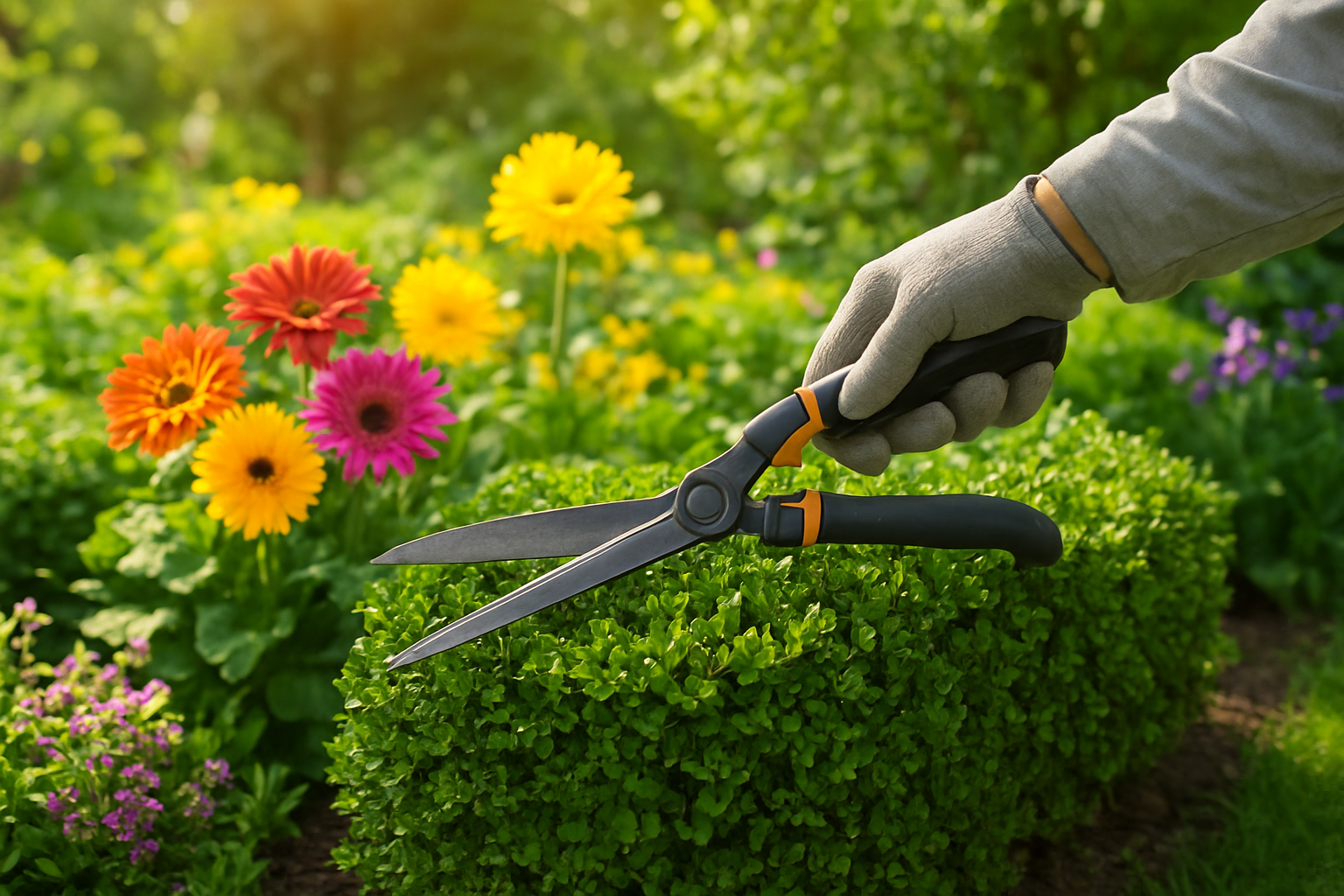When winter finally loosens its grip and the first signs of warmer weather appear, many homeowners begin to think about spring clean up. This annual ritual is more than just tidying your yard. It’s about giving your home’s outdoor spaces a fresh start, clearing away the mess left behind by cold months, and setting the stage for healthy growth throughout the spring and summer.
Spring clean up matters because it directly impacts the look, health, and functionality of your property. A well-done clean up improves curb appeal, encourages stronger plants and lawns, and even prevents problems like pest infestations or drainage issues later in the season. Whether you’re maintaining a small garden, a sprawling lawn, or simply keeping the front of your house inviting, investing time in spring clean up is one of the most valuable steps you can take for the year ahead.
In this guide, you’ll learn what spring clean up really means, how to prepare for it, and the essential tasks that keep outdoor spaces thriving. From lawns and garden beds to patios and gutters, we’ll cover everything you need to know to make the process smoother and more rewarding.
What “Spring Clean Up” Really Means and Why It Matters
At its core, spring clean up refers to the process of removing winter debris, refreshing outdoor areas, and preparing lawns and gardens for the active growing season. It often includes clearing fallen leaves, trimming plants, edging lawns, removing weeds, and checking outdoor fixtures like fences or gutters.
Why does it matter? Because winter can be harsh on outdoor spaces. Snow, ice, and cold winds leave behind branches, compacted soil, moldy leaves, and salt damage. If left unattended, these issues can stunt plant growth, encourage pests, and make your yard look tired just as the season of renewal begins.
Spring clean up isn’t just about looks, though appearance is a big factor. It’s also about function. A thorough clean up improves air circulation in soil and plants, prevents mold and fungus, and makes it easier to apply fertilizers and treatments effectively. It ensures that your home’s landscaping is healthy, safe, and ready for whatever spring and summer bring.
Preparing for a Successful Spring Clean Up
Before jumping into the work, preparation makes all the difference. Successful spring clean up starts with a plan. Walk around your yard to take note of the areas that need the most attention. Look for broken branches, matted grass, clogged drains, or flower beds covered in last season’s debris.
Gathering the right tools is also important. Gloves, rakes, pruners, and trash bags are staples, but depending on your landscape, you might also need a wheelbarrow, garden hoe, or even a leaf blower. For larger properties, renting or borrowing heavier equipment like a power washer or dethatcher can save time and energy.
Another overlooked step in preparation is timing. While it’s tempting to dive in on the first sunny day, starting too early can damage tender plants or soggy soil. The best time for spring clean up is when the ground has dried out enough to walk on without leaving deep footprints, and when temperatures are consistently above freezing. That way, you’re not working against nature, but with it.
Essential Yard and Lawn Tasks to Tackle First
For many homeowners, the lawn is the centerpiece of outdoor spaces. It’s also where most of the visible winter damage shows up. A proper spring clean up for your lawn ensures it grows thick, green, and healthy.
Start by removing leaves, sticks, and debris that block sunlight from reaching grass. Next, lightly rake the surface to loosen matted patches and help new shoots push through. This is also the time to check for bare spots. If areas look thin, overseeding can fill them in before weeds take over.
Aeration is another important task, though not every lawn needs it annually. Aerating relieves soil compaction, allowing water, air, and nutrients to reach roots more effectively. After that, applying a slow-release fertilizer gives grass the nutrition it needs to recover from winter stress.
Weed control is also critical at this stage. Early action prevents dandelions, crabgrass, and other invasive plants from spreading. Pre-emergent herbicides can be applied carefully in early spring, while manual weeding may be better for smaller yards or garden-focused homeowners.
By handling these tasks first, you create a strong foundation for the rest of your outdoor spaces to thrive.
Garden Bed Revival: Cleaning, Pruning, and Prepping for Growth
Garden beds are often where the artistry of landscaping shines, and they require special attention during spring clean up. Winter often leaves them covered with dead leaves, broken stems, and weeds. Clearing this debris not only makes beds look neat but also reduces the risk of mold, pests, and disease.
Pruning is another key step. Many perennials, shrubs, and roses benefit from early trimming to encourage fresh, healthy growth. Removing damaged or dead branches gives plants the energy to focus on new shoots and blooms. For flowering shrubs, it’s important to know whether they bloom on old or new wood to avoid cutting off buds.
After cleaning and pruning, enrich the soil by mixing in compost or organic matter. This refreshes nutrients and improves texture, making it easier for roots to spread. Mulching comes next. A fresh layer of mulch conserves moisture, regulates soil temperature, and suppresses weeds while also giving beds a polished, tidy look.
Reviving garden beds at this stage means your flowers, vegetables, and shrubs will flourish, creating a colorful and vibrant landscape as spring unfolds.
Outdoor Maintenance Beyond the Lawn: Paths, Patios, and Gutters
A true spring clean up goes beyond lawns and garden beds. Outdoor hardscapes and home features also take a beating during winter and need attention.
Paths and patios often accumulate dirt, moss, and salt stains. Power washing these surfaces not only improves appearance but also reduces slipperiness and extends their life. If you notice cracked stones or loose pavers, repairing them early prevents bigger problems later in the season.
Decks and fences benefit from a quick inspection, too. Check for loose boards, peeling paint, or signs of rot. Cleaning and resealing wood structures at the start of spring protects them from rain and sun in the coming months.
Gutters, though less visible, play a critical role in protecting your home. Clogged gutters cause water overflow that can damage foundations, siding, and landscaping. Clearing them as part of spring clean up ensures that April showers drain properly, keeping your property safe from costly water issues.
By extending clean up efforts beyond the grass and garden, you create a fully refreshed and functional outdoor space.
Smart Tips to Make Spring Clean Up Easier and More Effective
Spring clean up can feel like a big project, but a few smart strategies make it more manageable. Breaking tasks into sections—front yard, backyard, garden beds—keeps the work organized and less overwhelming. Working in shorter sessions also helps avoid burnout, especially when tackling large properties.
Using the right tools can dramatically improve efficiency. Ergonomic rakes, lightweight hoses, and wheeled carts reduce physical strain. Choosing eco-friendly products, like organic fertilizers and natural weed controls, makes the process safer for pets, kids, and the environment.
Another tip is to compost what you can. Leaves, grass clippings, and plant trimmings can be turned into valuable soil over time. Instead of bagging everything for disposal, recycling organic waste through composting closes the loop and reduces landfill use.
Finally, consider enlisting help if needed. Whether it’s family members, neighbors, or a professional landscaping crew, teamwork can transform spring clean up from a chore into a more enjoyable, quicker process.
Common Mistakes to Avoid During Your Spring Clean Up
Even with the best intentions, some mistakes during spring clean up can set your yard back. One common error is starting too early when soil is still wet. Walking or working on soggy ground compacts soil, which makes it harder for grass and plants to grow.
Over-pruning is another pitfall. While trimming is important, cutting too much or at the wrong time can weaken plants and delay blooming. Similarly, applying too much fertilizer can burn grass or encourage weak, rapid growth that doesn’t last.
Neglecting safety is another risk. Using dull tools, ignoring protective gear, or climbing ladders without support when clearing gutters can lead to injury. A little caution goes a long way in making spring clean up safe as well as effective.
Finally, skipping smaller details like edging lawns, cleaning garden borders, or inspecting outdoor lighting can leave your property looking unfinished, even if the major work is done. Avoiding these mistakes ensures your efforts deliver the best possible results.
Creating a Simple Seasonal Checklist to Stay on Track
One of the easiest ways to stay organized with spring clean up is to create a seasonal checklist. While everyone’s property is different, a clear checklist ensures no important task is overlooked.
Start with broad categories: lawn care, garden beds, hardscapes, and home maintenance. Within each, add the steps that apply to your space—raking, pruning, mulching, power washing, gutter cleaning, and so on.
A checklist not only guides the process but also makes the work more rewarding. Checking off each task as it’s completed provides a sense of progress and keeps motivation high. For families, it’s also a way to assign tasks fairly, so everyone contributes to starting the season fresh.
Over time, refining your checklist helps streamline the process. You’ll know what tools to prepare, what order of tasks works best, and how much time to budget.
Final Thoughts: Start the Season Fresh With a Well-Planned Spring Clean Up
Spring is a season of renewal, and a thoughtful spring clean up brings that renewal to your home’s outdoor spaces. By removing winter’s mess, reviving lawns and gardens, and maintaining paths, patios, and gutters, you set the stage for months of beauty and enjoyment.
The process doesn’t have to be overwhelming. With preparation, smart strategies, and a simple checklist, spring clean up becomes a manageable and even satisfying project. It protects the health of your landscape, boosts curb appeal, and creates outdoor areas where you’ll love spending time as the weather warms.
Starting the season with a clean, fresh, and well-cared-for property is one of the best investments you can make for your home. A well-planned spring clean up not only enhances your surroundings but also ensures you’re ready to enjoy everything that spring and summer have to offer.
My name is Mustafa, and I have been blogging for over 5 years. I am passionate about sharing complete, accurate, and helpful information with my readers. Along with managing content on The Matcha Read, I also contribute blog posts to premium websites. My goal is to provide valuable insights in a clear and easy-to-understand way, so every reader walks away with useful knowledge.










